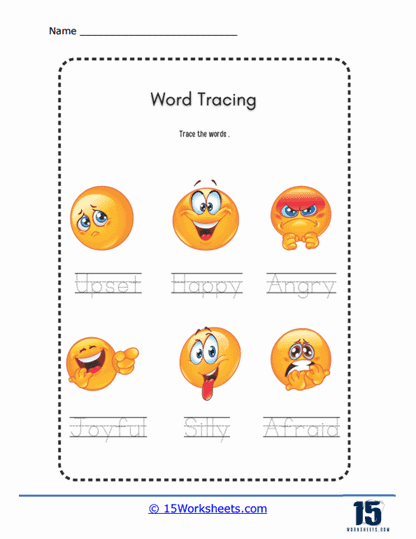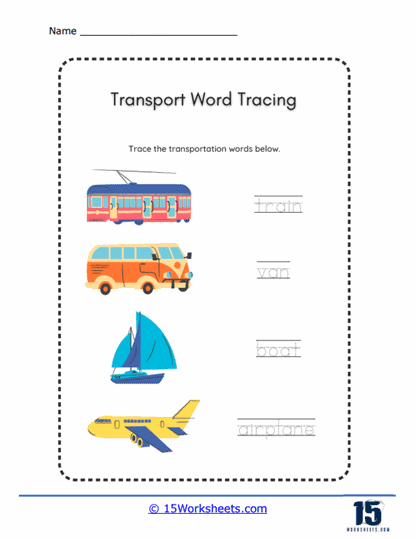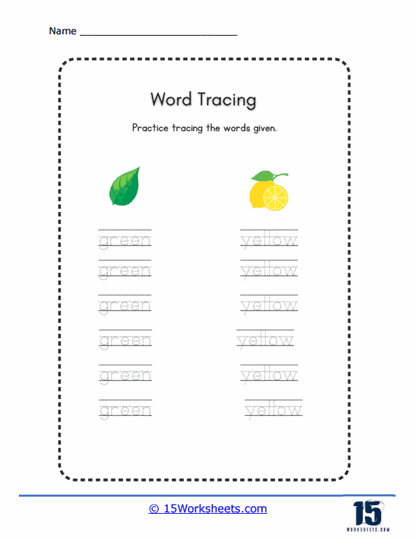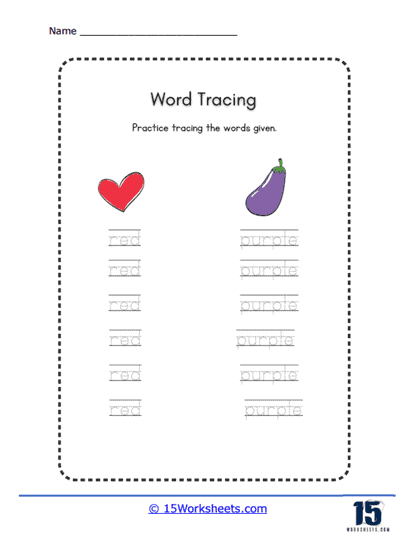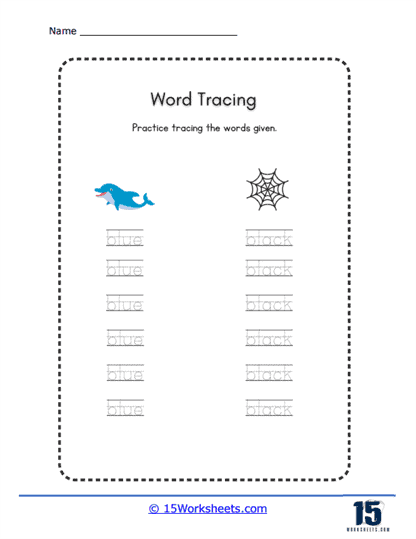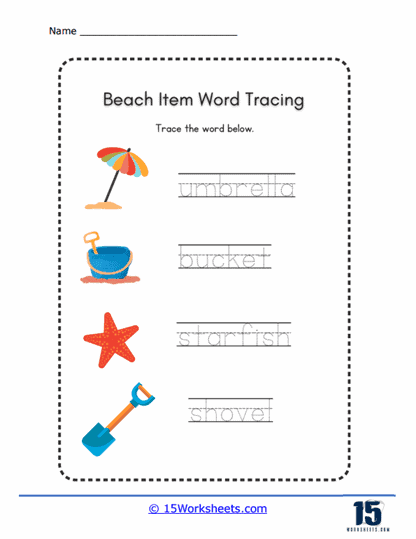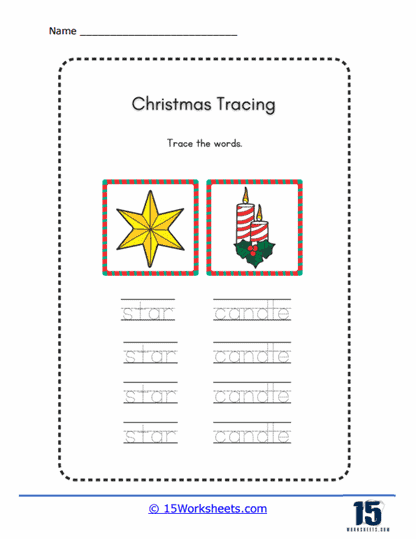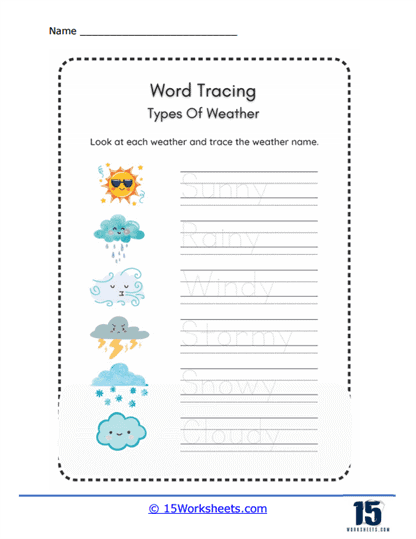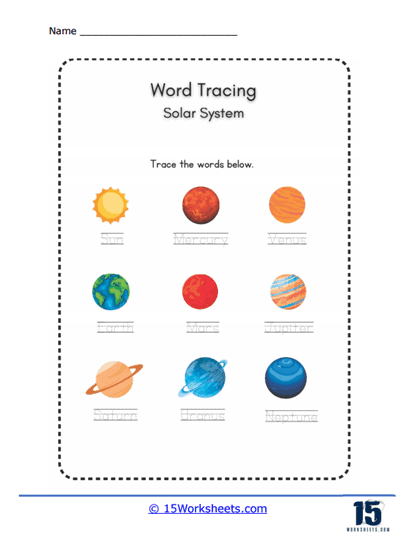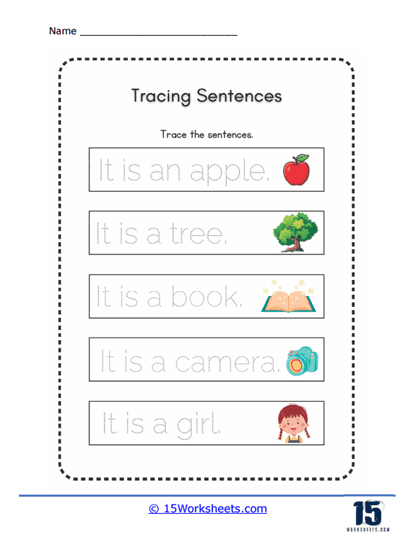Word Tracing Worksheets
About These 15 Worksheets
Imagine you’re drawing a picture, but instead of drawing a tree or a dog, you’re drawing words! Word Tracing Worksheets are like a game or puzzle that helps you learn how to read, write, and spell words. Just like you follow a path in a maze, you follow the lines to write letters and words on these worksheets.
But why do we need them? Well, imagine you want to learn how to bake cookies. You can’t just put some ingredients together and hope they turn out good, can you? You need a recipe to follow. That’s what these worksheets are for your words – a recipe or guide to help you write words correctly. They show you the shape of each letter, which way the lines go, and where you should start and finish. This makes it easier to remember how to write the word on your own later.
These worksheets are like your personal trainers for reading and writing. They’re very helpful because they make learning fun and easy. They teach you how to form letters and how to put those letters together to create words. It’s like building a tower with blocks. First, you need to learn how to stack one block on top of another. Then, you can use that skill to build a bigger and more impressive tower. Similarly, tracing worksheets help you learn the building blocks of words – the letters – and then how to put them together to make words.
Now, you’re probably wondering, “How does this help me read better?” Great question! When you trace a word, you’re not only practicing writing, but you’re also seeing the word, saying it out loud, and hearing it. This helps your brain make a strong connection between the word’s sound and how it’s written, which helps you remember it better. So, when you see that word again in a book, you can recognize it easily and read it out loud correctly. That’s why tracing words can make you a better reader!
You’ll find different types of exercises on this collection of worksheets, each designed to help you improve different skills. Let’s take a closer look at these activities:
Letter Tracing – This is where it all begins. You’ll learn how to write all the letters of the alphabet, both capital (or big) letters and lowercase (or small) letters. This helps you learn how to recognize and write each letter, which is the first step in reading and writing words.
Word Tracing – After you’ve learned to write letters, you’ll begin to trace words. You might start with small, easy words like “cat” or “dog”. Then, you’ll move on to bigger words like “elephant” or “butterfly”. By tracing words, you’ll learn how letters come together to form words.
Sentence Tracing – Once you’re good at tracing words, you’ll start tracing whole sentences like “The cat sat on the mat.” This helps you understand how words come together to make sentences.
Matching Exercises – These exercises have pictures and words that you need to match by drawing a line. This helps you understand the meaning of words. For example, if you see a picture of a cat and the word “cat”, you’ll draw a line between them.
Fill in the Blanks – In these exercises, you might see a sentence with a missing word. You’ll have to figure out the missing word and write it in the blank space. This helps you learn how to use words in sentences.
Word Searches – This is like a treasure hunt but with words. You’ll have a grid full of letters, and you’ll have to find specific words in it. This game is fun and also helps you recognize words quickly, which is an important reading skill.






